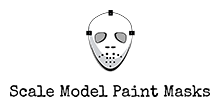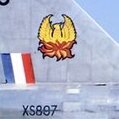Everything posted by Mozart
-
Portrait 3 Will Not Cut - Problem Solved
Any further progress Mike?
-
Meteor-Roundels-Walkways.studio3
I think it's A4 Mike, not A5? Max
-
Portrait 3 Will Not Cut - Problem Solved
Whatever the outcome, this has developed into a fascinating thread! And the file cuts perfectly well:
-
Portrait 3 Will Not Cut - Problem Solved
I’ll try later Mike. You could do the reverse and download one from here that is proven to work and try! Max
-
Portrait 3 Will Not Cut - Problem Solved
Thanks for the explanation Dave, maybe a case of “a trick too far”!? Is there an option to turn the Autoblade off, if it’s that clever? Max
-
Portrait 3 Will Not Cut - Problem Solved
Are you actually taking the blade out of its holder and setting its depth manually Mike? I don’t understand how it can be reverting to zero, that’s not physically possible on mine.
-
Portrait 3 Will Not Cut - Problem Solved
I’m sorry to read of your initial problems Mike, I agree that making sure the blade is latched in place is the thing to check, because you seem to have covered all the other points well. Let us know how things progress! Max
-
A short summary of my masked aircraft models
Remarkable examples of what can be done using home-produced masks, well done Gaz. 👌
-
Sound Off!
I haven't bought any decals for the past 8 years (I rarely if ever model what's in the box) so my investment in my Cameo was a good one in my opinion - gives me so much freedom and control of what I model. Max
-
Topic Tidy-Up
It’s always worth reading and sharing places where you get good, reliable and prompt service Mike, so I think it’s a worthwhile idea. Any thoughts Kev? Max
-
Silhouette Cutter/PC Connectivity
I think you’ll get more satisfaction using it that way Mike, I can envisage quite a lot of frustration trying the Bluetooth way on different levels. Mine sits alongside my PC and is “permanently” connected but not used that often. Max
-
Silhouette Cutter/PC Connectivity
Mine’s a Cameo 2 Mike, I bought it I think 8 years ago and it does everything that I need. I had a problem with it last year but found it was the power supply that was faulty, easily rectified. My advice would be to definitely go for the Cameo 4. My wife makes greetings cards and she also uses it for her crafting activities.
-
Silhouette Cutter/PC Connectivity
Mine’s an older model Mike so USB is the only mode but I believe some of the newer ones also use Bluetooth. I’m really surprised that it’s not mentioned in any of the blurb or ads though. Kev I think has a Cameo 4 so he’ll doubtless chip in with some info about his. What’s on your shortlist? Max PS, just found this: The Silhouette Cameo 4 Digital Cutting Tool features cutting edge technology, operating three times faster than the Cameo 3. The ultimate DIY machine for creative craft projects, this can be used to cut over 100 materials, including paper, cardstock, vinyl, and fabric up to 12 inches wide.The Cameo 4 model has an increased cutting force of up to 5kg, and offers Bluetooth wireless connectivity with increased range. This is also compatible with PixScan technology.
-
Server Migration!
Yes, good in Dorset too!! 😁 Max
-
Asking for advice on which cutter to buy
Hello bushande. The sizes that you are talking about are absolutely right on the limit with what is possible for I think any cutting machine, 3 to 4mm is the smallest that I’ve cut in 7 years of using my Silhouette machine. It can cope slightly better with more square letters and numbers like “T”, “E”, “1”, “4”, “7” etc but any number involving a curve or “centres” cause problems, with "B" and “8” possibly being the most demanding and “S” being challenging. I always cut multiples of these small areas so that I can pick the best. This is a Spitfire that I did some years ago when I was fairly new to masking making, the letters are 3 to 4mm high. You can judge for yourself which work better than others, and experience has shown me how to improve some of the less than satisfactory parts here. Hope this helps a little. Max
-
Server Migration!
All OK in sunny Oxford but I’ll check later if it’s reached as far as Dorset! Max
-
Hi from Virginia
Agreed! Hope you find the masks posted so far useful, and good luck with your adventures with your Silhouette. Max
-
Sound Off!
I’ve been concerned too Kev about the lack of activity on the site. The problem as I see it is that, once basic tutorials have been posted, the site then simply becomes a library of masking schemes. That’s no bad thing at all, it will clearly encourage and attract visitors but will it promote much in the way of dialogue or interaction? There’s no easy answer, but I agree with Dave that questions often asked on LSP would be better asked, or directed here. Perhaps a more prominent “plug” on LSP would be in order? Max
-
MDuv, Hi from Belgium
Agreed, no doubt you'll be a very valuable member of the masking forum, welcome Mathieu. 👌
-
Questions concerning Silhouette Cameo 4 Quaility & Suitability for 1/48 scale canopy masks
Hmmm, intriguing post Bax! I don’t own a 4, simply a 3 which as I’ve said before does everything that I ask of it, and very effectively. I’ll be as interested as you though to read what people have to say about their experiences with their 4, can it really be such a retrograde step as owners have stated in your post, it seems very unlikely. Let’s hope you get some answers from experienced users. Max
-
Camouflage and insignia masks for Mk IX Spitfire
What's a fender?
-
Hello from Czech Republic
I’ve had my Silhouette since 2014, I needed the “professional” upgrade to get features which it now appears are standard on new models. I don’t know what the SW upgrade comprises so I’m sorry but I can’t comment. Max
-
Hello from Czech Republic
You're making the right decision getting a mask-cutting machine, glad to see you here. Max
-
Hi from Limburg, Belgium
Good to see you here Pascal. Hopefully some of the tutorials here will help you get started with your Silhouette but ask if you have any problems. No guarantees for answers but we’ll do our best!
-
BOAC Beaufighter
Like that very much Steve, especially the finish you’ve achieved. Brilliant! Max





